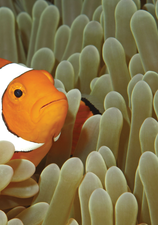Visual programming with Alice
Finding Nemo

If you can use your desktop environment, then you can also write programs: All you need is your mouse, the Alice IDE, and some time to experiment.
In the Alice development environment, you don't need to type in a single command or learn a cryptic language. Instead, you can create applications and compile all the necessary actions and processes just by clicking your mouse. You start by dragging ready-made items into an empty 3D world. Each item offers several actions that change its appearance, its location, or its behavior. Then, you can just drag and drop the desired actions into a sequence plan, which Alice executes on demand.
Easy-as-pie controls certainly have their limits. For example, the applications created here are always rooted in the 3D world. Alice is therefore suitable mainly for 3D animations or games. The almost mandatory requirement for the 3D world is that Linux supports your video card's 3D acceleration; otherwise, the program you create will run at a snail's pace.
Number Girl
Alice [1] currently exists in two versions. According to the makers, children especially should use the older version 2. Above all, this version teaches logical thinking and the basics of programming. The new version 3, however, focuses on object-oriented programming. It increasingly uses the standard terminology found in this field, thus allowing an easier transition to Java later on.
[...]
Buy this article as PDF
(incl. VAT)
Buy Linux Magazine
Subscribe to our Linux Newsletters
Find Linux and Open Source Jobs
Subscribe to our ADMIN Newsletters
Support Our Work
Linux Magazine content is made possible with support from readers like you. Please consider contributing when you’ve found an article to be beneficial.

News
-
Parrot OS Switches to KDE Plasma Desktop
Yet another distro is making the move to the KDE Plasma desktop.
-
TUXEDO Announces Gemini 17
TUXEDO Computers has released the fourth generation of its Gemini laptop with plenty of updates.
-
Two New Distros Adopt Enlightenment
MX Moksha and AV Linux 25 join ranks with Bodhi Linux and embrace the Enlightenment desktop.
-
Solus Linux 4.8 Removes Python 2
Solus Linux 4.8 has been released with the latest Linux kernel, updated desktops, and a key removal.
-
Zorin OS 18 Hits over a Million Downloads
If you doubt Linux isn't gaining popularity, you only have to look at Zorin OS's download numbers.
-
TUXEDO Computers Scraps Snapdragon X1E-Based Laptop
Due to issues with a Snapdragon CPU, TUXEDO Computers has cancelled its plans to release a laptop based on this elite hardware.
-
Debian Unleashes Debian Libre Live
Debian Libre Live keeps your machine free of proprietary software.
-
Valve Announces Pending Release of Steam Machine
Shout it to the heavens: Steam Machine, powered by Linux, is set to arrive in 2026.
-
Happy Birthday, ADMIN Magazine!
ADMIN is celebrating its 15th anniversary with issue #90.
-
Another Linux Malware Discovered
Russian hackers use Hyper-V to hide malware within Linux virtual machines.

